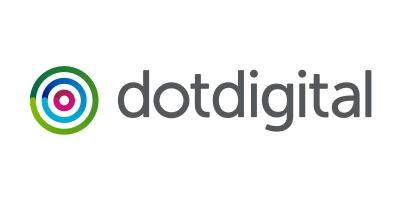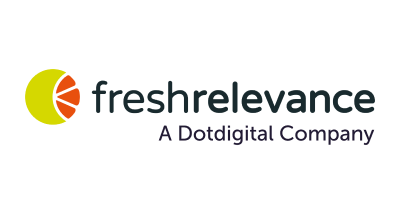Top strategies for digital marketing success
The ultimate marketing playbook 2024
Insights from industry leaders to help you adapt and refine your 2024 marketing strategy.












Head of EMEA Marketing

As the Head of EMEA Marketing at Dotdigital, I see many brands missing the countless benefits of cross-channel marketing. Here I’m going to try debunking the mysteries and provide tips to get started.
In today’s fast-paced, interconnected world, a cross-channel marketing strategy is vital for staying ahead of the competition. Crafting a unified message that resonates with your audience across various platforms is crucial for engaging customers and driving tangible results. Among the myriad of available channels, SMS often doesn’t receive enough attention but holds a tremendous impact.
With nearly 6.92 billion people having access to a smartphone, SMS marketing allows unparalleled reach. The extensive coverage makes it one of the most direct and effective communication channels currently available.
While numerous companies exploit service-based SMS campaigns (for example, shipping updates and booking confirmations), many shy away from deploying marketing messages. However, as long as customers are willing to receive communications via SMS, testing suitable use cases can prove highly beneficial. By sending the right message, to the right person, at the right time, and through the right channel, you can cater to your customers’ preferences, thereby gaining a competitive edge.
What’s more, SMS as a marketing channel has a remarkable social impact. A striking 22% of SMS messages are forwarded to family and friends. By leveraging SMS, you can effectively turn customers into brand advocates, expanding your reach significantly.
To successfully incorporate SMS marketing into your cross-channel strategy, follow these critical steps:
Entice customers to opt-in to your SMS marketing through incentives like exclusive discounts, special promotions, or early access to new products.
You need an SMS marketing solution that seamlessly integrates with your existing marketing tools. Ensure it offers crucial features like campaign management, analytics, and automation capabilities.
By implementing these best practices, you can maximize the potential of SMS marketing, driving customer engagement and business growth.
The list goes on, the key to success is to remember SMS is a great, accessible, and direct channel – getting the message right is essential.
By implementing best practices for your SMS marketing and cross-channel strategies, you will unlock tremendous potential for your business. But don’t just take my word for it — our customers have achieved amazing results with SMS in their cross-channel campaigns.
Once you’re set-up, it’s time to get implementing tactics to drive engagement and boost revenue, why not consider some of these exciting SMS use cases?
Hopefully, you’re inspired to add SMS to your cross-channel marketing strategy. Remember, a well-executed cross-channel marketing strategy that integrates SMS can skyrocket customer engagement, business leads, and sales. By staying committed to your brand’s core messaging and objectives while adapting to the ever-changing landscape of 2024, your organization will thrive in the ceaselessly evolving world of digital marketing.

Growth Marketing Manager

In the rapidly evolving world of marketing, cross-channel personalization has emerged as a crucial strategy for improving customer engagement and increasing sales. Website personalization alone has been proven to increase average sales by 15% for those in the retail sector.
Email personalization has been a table stakes for many years already and for good reason. Why wouldn’t you want to delight customers at every stage of their journey – including your website too?
With website personalization, you can rest assured you are giving each impression the best chance of resulting in a conversion, by only displaying what is relevant at the right time for each customer. Dynamic website content enables you to present personalized content that is contextually and behaviorally relevant to every website visitor. It also enables you to update or adjust your website at speed, without relying on dev.
A great website personalization strategy is built on a great ID rate. The more website visitors you can identify, the more experiences you can personalize and convert. Website identification occurs when your website personalization solution can match a website visitor with a record in your CRM.
The Fresh Relevance platform helps brands to identify and further improve website ID rates leading to a more effective website personalization strategy.
You won’t be able to ID all of your website visitors at first, which is why data capture is important.
Utilize data capture popovers with incentives to encourage new visitors to sign up for newsletters, offers, and more. Data capture can also be used to enrich existing customer profiles, e.g. by asking relevant questions about what your customer likes, and pairing the responses with the existing record in your CRM.
Your website personalization strategy is as good as the data you feed it. By analyzing your existing CRM data and enriching it with products browsed and purchasing records, you will be able to spot trends and group customers who share similar attributes into customer profiles. These customer profiles will power the personalization tactics you will serve across your website.
The end result is that your marketing stack will know what to present and to whom to achieve maximum relevance. Example profiles might include “VIPs”, “high spenders”, frequent buyers of a particular category, or “customers at risk”. This data can be coupled with real-time behavioral data to achieve a true one-to-one experience.
Whilst your data might uncover some less obvious areas where you could benefit from personalization, there are four areas that you should prioritize for the quickest returns.
By personalizing these areas, you create a more engaging, responsive, and customer-friendly environment that attracts and retains customers.
Before launching your personalization campaign, it’s important to set clear and measurable goals. Some of these goals might set themselves because you have already identified particular metrics that you’d like to improve using website personalization. However, if you do need guidance, here are some examples:

Marketing Director, UK & APAC

In today’s digital age, online marketing and ecommerce, in particular, have become an integral part of the global economy, attracting over two billion customers worldwide. With such a vast base of potential customers, businesses face intense competition, making establishing trust and loyalty online crucial.
Customer reviews play a pivotal role in achieving this goal. Positive reviews instill confidence in potential buyers, leading to repeat purchases and increased customer loyalty.
However, customer loyalty is fragile. PwC research indicates that 32% of customers would abandon a company they once favored after a single negative experience.
In a landscape rife with new competition and innovation, businesses cannot afford to lose customers due to poor experiences. Embracing the power of authentic customer voices, as conveyed through reviews, is a strategic approach to fostering loyalty and building a strong brand reputation.
Beyond providing valuable feedback, reviews offer many benefits to online retailers. They help businesses improve by offering valuable insights to adjust their strategies and enhance business metrics by boosting conversion rates and improving search engine optimization (SEO), increasing website traffic and visibility.
To fully harness the power of customer reviews, businesses must prioritize their collection and utilization. By creating a seamless review process, promptly responding to feedback, and analyzing review data, businesses can leverage reviews to achieve marketing success.
Here’s a summary of the key ways customer reviews will continue to help drive success into 2024:
Reviews can spread positive word-of-mouth, attracting customers and expanding a brand’s reach.
Asking customers to leave reviews is one of the easiest ways to spin up a word-of-mouth marketing strategy you can quantify, monitor, and ultimately control — especially if you’re automating review invitations to go out every time someone purchases.
Legitimate reviews demonstrate that your products are tried, trusted, and tested. Both positive and negative feedback about their experience is valuable because it helps win the ‘zero moment of truth’ (ZMOT).
ZMOT is the Google-created term meaning the moment when a consumer has a need, intent, or question that they would like to address through an online search. It’s an important terminology because it pinpoints the make-or-break moment for online businesses and how vital it is to appear at the top of search results and come across as a worthy and trusted choice.
Adding online reviews to the customer journey is a great way to provide keywords to search engines for better rankings and provide social proof to confused shoppers.
It also helps them form their own opinion based on other customers’ experiences, resulting in a much more educated purchasing decision. This is a valuable and less expensive route to ZMOT as it utilizes the user-generated content power of reviews and alleviates the costs of paid search strategies.
According to industry leaders, average ecommerce conversion rates are around 2.5% to 3%, but reviews can give them a boost. In fact, business customers using TrustScores or review content on their websites and in marketing campaigns can see a median increase of 23% in website conversions.
Reviews are a form of social proof, and adding visible social proof at significant steps in the customer journey will create feelings of safety and security.
The user experience is paramount to helping undecided and unfamiliar shoppers feel
comfortable making purchases. Websites should include star ratings for every item on category pages, display a review carousel near the top and bottom of the page, and star ratings near the add-to-cart button on product pages.
Search engines like Google consider reviews to be a valuable ranking factor. Reviews are great user-generated content for SEO because they usually contain keywords like brand and product names. Google favors lots of context and information, so the more reviews there are with brand and product terminology, the better.
Businesses collecting reviews on Trustpilot can see a median uplift of 30% more clicks to their website across Ads and paid and organic search supported by our domain authority and the SEO power of trusted third-party reviews.
—
Reviews, both positive and negative, offer relevant information for marketers. While not desired, negative reviews reveal shortcomings in service elements like shipping, sizing, and returns. With insights like these, it’s easier for businesses to jump on improvements in real-time. Removing the barriers to business growth.
As the marketing landscape continues to evolve, using the power of customer reviews is more important than ever for businesses looking to stay competitive and achieve long-term success.
Trustpilot was founded in 2007 with a vision to create an independent currency of trust. A digital platform that brings businesses and consumers together to foster trust and inspire collaboration. We are free to use, open to everybody, and built on transparency.
Trustpilot hosts reviews to help consumers shop with confidence and deliver rich insights to help businesses improve the experience they offer. The more consumers use our platform and share their own opinions, the richer the insights we offer businesses, and the more opportunities they have to earn the trust of consumers, from all around the world.
Over 144 million consumer reviews of businesses and products of over 626,000 domains have been posted on Trustpilot, and those numbers are growing by more than one review per second.

Director

Are you struggling to make your paid search campaigns profitable? Or looking at paid search thinking “we should do this, but we’re nervous…”. Well, neither of these groups is alone.
In this section, we hope to provide you with clarity, regarding things that have worked for our clients both over the years and heading forward.
The problem with most advertisers is that they approach paid search with what I call a ‘paid search mindset’. A philosophy of ours is that marketing has been lost from digital marketing.
What we mean is that you need to:
Existing isn’t enough now. You need to be competitive.
Before you start advertising, you can do some prep work:
The thing you don’t know and cannot predict is what is going to happen. Bear in mind that this will not be easy and will not work the first time. You need to turn it on, gather some data, and then adapt based on what you learn.
Things you should be monitoring:
PPC isn’t for everyone, so be prepared for it to be too expensive, too competitive, or work perfectly for you. Marketing is all about trying and giving things a good go.
Here are some of the key benefits that our clients harness through profitable paid search campaigns:
We tend to find that new advertisers need between three and six months to make a campaign profitable. After that, we’re balancing how much to increase budgets whilst keeping things profitable.

Global Marketing Director

According to marketing commentators around the world, artificial intelligence, better known as AI, has revolutionized the marketing landscape. But, in reality, AI has been with us for a long time. Marketers have been employing it across the customer journey in the form of product recommendations, chatbots, and send time optimization (STO).
It is the recent leap forward in accessibility, particularly the accessibility of generative AI and natural language processing, that has pushed it to the forefront of marketing strategies. With the adoption of AI rising fast, you need to get a head start and begin exploring how to incorporate it into your marketing strategy. Figuring out the hows, whens, and whys now will help you rapidly outpace your competition.
AI has already become integral to marketing, yet misconceptions persist. Let’s clarify some common myths surrounding artificial intelligence.
In reality, the AI landscape is diverse, with different types of applications and methods offering various benefits and results. These include, but are not limited to:
AI, particularly ML and NLP, is designed to enhance human potential, not replace it. AI can automate repetitive tasks, freeing up time for creativity. Regardless of the AI type, people will always need to check the output for suitability.
AI-powered solutions make marketing more effective by utilizing customer data from multiple touchpoints. They centralize data, deliver actionable insights, and facilitate personalized experiences to drive conversions and loyalty. While its implementation can seem costly from a time or monetary perspective, AI quickly pays off.
AI can support and enhance almost every area of your marketing strategy, from personalizing the customer journey to optimization and predictive engagement. It is an invaluable tool you must adopt across your marketing workflows and campaigns.
Create seamless, personalized customer experiences across multiple channels. Using AI-driven insights you can easily identify key moments to connect with customers and craft the perfect message across different channels and devices. You can tailor your messaging and automatically configure it to fit the customer use case (mobile ads, mobile screens, site banners, etc.) or ask it to revise for a particular tone.
Use AI to automate repetitive tasks and free up your time to focus on higher priorities. You can use AI algorithms to automatically adjust bidding strategies for paid search campaigns based on the performance of individual keywords. You can also analyze website traffic data to identify trends and patterns in behavior and so adapt targeted advertising campaigns. And it doesn’t stop there, generative AI creates subject lines based on past customer behavior and provides suggestions to keep tone and content on-brand.
AI helps optimize remarketing and segmentation strategies by using ML to interpret data around users’ purchase history and identify patterns that can help predict future purchase behavior. It reduces cycles and boosts precision by finding the patterns that can be used to create hyper-targeted audience segments.
Make informed decisions about key moments in the customer journey by using customer data to identify when the recipient profile is most likely to engage with a communication (e.g., open an email or click a push message). This data can then inform send times for future messaging. Other use cases include:
From predictive analytics, product recommendations, and the marketing intelligence offered by Dotdigital’s WinstonAI, you can tap into intuitive and scalable tech that enables you to deliver effective personalized marketing. With the latest advances in artificial intelligence, AI-powered marketing holds the keys to more efficient and effective campaigns. And with endless possibilities and opportunities at your fingertips, the time is now to get your marketing strategy ahead of the curve.

Head of SEO

Businesses live and die by their ability to attract new customers and compared to the immediacy of paid efforts, organic search endures as the most sustainable acquisition channel, fostering credibility and trust through genuine, value-driven content.
With rising advertising and cost-per-acquisition (CPA) costs, investing in improving and elevating your appearance through search engine optimization (SEO) is a cost-effective marketing strategy that offers value beyond just immediate sales.
The traditional marketing funnel — awareness, interest, desire, action — relies on a steady stream of new customers. SEO plays a critical role in driving lower-cost top-of-funnel traffic at the awareness stage.
It also plays a role in the other stages. As shoppers continue their journey from awareness to interest (research) to action (purchase), the intent revealed in their keyword choices moves from informational to transactional. Targeting the correct intent with the right content – at a product and editorial level – across your website influences shopper movement to the next phase, increasing the likelihood of conversion.
Websites that rank high in search engine results are usually perceived as more trustworthy, enhancing your business reputation and making users more likely to choose you over your competitors.
It makes sense to advertise for keywords with high transaction intent but the value of other content like buyers’ guides and how-to articles is not always immediately obvious. That’s where SEO shines. If you can take the time to understand what people are searching for – use keyword research tools – and then optimize that content accordingly you can earn substantial increases in traffic at little cost.
Keep in mind that long-tail search terms tend to convert at a higher rate than 1-2 word searches so content that answers these queries can be incredibly effective.
Keyword data provides a window into customers’ wants and needs. Sites that fill those desires quickly are more likely to make the sale. That same data helps understand how shoppers think or speak about their desires. Using their keywords on your site can improve the experience. For example, if most searchers seek “affordable bathroom floor tiles,” emphasizing low-cost options will improve relevancy and usability.
Google uses signals like high engagement rates to assess the quality of a website user experience as a key ranking factor. So a good UX means better rankings.
At Proof3, we believe in a collaborative approach to SEO, combining our clients’ respective industry knowledge with our technical, on & off-page SEO expertise.
Once we have gathered all relevant information from our client, including their business goals, priorities, and development roadmap, we start auditing their domains.
This allows us to expose issues and opportunities, from which we prioritize tasks and fixes based on expected impact. For example, there are always minor issues on a website that are ‘nice to fix’ but won’t necessarily contribute to reaching the goals in which case we won’t recommend spending time on these.
Our findings are turned into an SEO roadmap; a monthly breakdown of actions we’ll take, and why, so the client can easily keep track of what’s going on.
The roadmaps are a forward-looking but flexible framework, reviewed every three months, and readjusted if necessary. The effects of a Google algorithm update, for example, might need some immediate attention to ensure that we’re still on track to achieve the long-term goals.
As AI develops over the next few years – we’ve already seen generative AI start to be rolled out in search results in the US – SEO is undoubtedly set to change, with algorithms increasingly leveraging AI to understand user intent, adapt to dynamic search patterns, and refine content relevance. We’re expecting an era where optimization strategies pivot towards a more nuanced and anticipatory approach. Stay adaptable.
Proof3 is a data-driven growth agency focused on delivering better data, smarter decisions, and sustainable business growth for ambitious ecommerce businesses.
Our expertise spans digital strategy, analytics engineering & deployment, customer experience optimization, data analysis and iterative testing, paid and organic acquisition, and marketing automation.
What really drives us is a passion for great customer experience and a burning desire to delight our clients and their customers.
We’re already working with the likes of Tile Giant, Goddiva & Just Kampers to lower acquisition costs, boost conversions and increase profitability.

Head of Strategy EMEA

In the dynamic landscape of digital, marketers find themselves grappling with a multitude of new challenges; at times seemingly contradictory. From the imperative need to leverage AI intelligently to ensuring cost-effective solutions in times of economic uncertainty, the demands are relentless.
Navigating through these complexities can pose numerous challenges when determining the optimal course of action. Through the partnership between BORN Group & Dotdigital, together we are looking into pragmatic ways to face these different topics, focusing on five key trends and solutions to explore.
The trajectory of AI is propelling the emergence of machines as customers. CEOs anticipate that machine customers will contribute to 20% or more of revenue by 2030. By 2028, machine customers are expected to make 20% of human-readable digital storefronts obsolete. Marketers and content specialists must prepare to cater to the unique needs of machine customers, ensuring accessibility to AI-powered entities to avoid revenue loss.
Key tips: Future-proof brand search functionalities, optimize for cross and up-selling, and focus on educational and lifestyle content directly on the search result page; ensure easy accessibility of product and service information for AI-powered customers.
With tech and mainstream brands shaping the future of retail, brands increasingly need to prioritize scenario planning and future-proof omnichannel and digital offerings. New standards, particularly in augmented reality (AR), are emerging. The widespread adoption of 5G connectivity and advancements in headset hardware will establish augmented reality as an interface for daily life. Millennial-friendly brands have been future-proofing their digital solutions for the past few years and are slowly starting to set up new standards and anticipating a shift in consumer behaviors.
Key tips: Marketers should audit their content promptly to initiate future-proofing. In response to changing consumer behavior, brands like Farfetch and ASOS have already been rethinking their content to optimize voice-activated browsing.
According to a study by BCG, Gen-Z now spends 50% of their transaction time in the online ‘inspiration phase.’ This phase, crucial in the customer’s path to purchase, involves finding inspiration or inspiring others on social media. We’ve observed that combining bitesize and longer video content can enhance the customer experience during this phase.
Key tips: Use bitesize formats to capture attention and longer content to enrich the inspiration phase. Both short- and long-form videos are valuable, considering the preference for how-to videos and vlogs among younger consumers. This is also a great way to offer an enhanced presentation of the product and services offered by the brand (personalization, engraving, etc).
In the wake of the digital acceleration prompted by the COVID period, marketing operations leaders seek to rectify content production bottlenecks resulting from siloed teams and legacy workflows, frequently established in response to emerging needs arising from successive lockdowns and similar constraints.
Key tips: Brands and agencies alike can gain efficiency by using a new kind of workflow optimization. Adopt AI technologies for workflow optimization, aiding in the creation, testing, and delivery of applications, as well as reviewing and optimizing team organization.
As recession worries grow, brands find themselves torn between their desire to balance long-term relationship-building and short-term customer acquisition efforts to relieve short-term revenue pressures. 40% of digital marketing leaders are laser-focused on improving customer lifetime value, repeat purchases, the share of wallet, and loyalty. This means that it is imperative for brands to develop content that can simultaneously boost customer retention and product adoption.
Key tips: Our partnership enables us to assist leaders across the C-suite to explore new ways to develop and execute strategies that enable short-term cost optimization with continued long-term digital growth. Through a thorough audit of a brand’s content, we leverage opportunities for aggregation of marginal gains: review each step of the customer decision journey (CDJ) one by one and ensure each feature,
or piece of content has been set up for an optimal conversion rate and increased AOV, encouraging retention, rather than acquisition which is more expensive in times of recession.
Customer experience is a cornerstone of engagement success. Our partnership focuses on strategy, process, production, and workflow automation to streamline operations–allowing clients to gain efficiency without compromising quality.
We craft strategic pathways, combining all-in-one content production solutions with cutting-edge tools and technology, mitigating risks, ensuring global reach, and delivering supreme quality while providing maximum adaptability. Our partnership means we handle the essentials, so clients can focus on achieving the extraordinary.
BORN Group is an award-winning agency and consultancy serving industry-leading brands and organizations in the world. BORN cuts deep and wide with offerings covering brand research & strategy, experience and service design, and technology covering ERP, OMS CRM, commerce, data science, digital marketing, and more. Our Stella Framework serves as our foundational guide to help brands define business strategy and create, activate & amplify engagement via all channels, making BORN the go-to global omnichannel commerce agency partner.

Marketing Technology Specialist

Partner Growth / Marketing

In our journey at Rusty Monkey, we’ve discovered the transformative power of social media marketing. It can be challenging to overcome the hurdles of brainstorming topics, carving out time for content creation, and overcoming personal fears. The most effective action is to simply “go for it.” Not all social media initiatives require meticulous strategic planning. Some of the most engaging posts can arise spontaneously, in the heat of the moment.
The heart of our social media strategy begins with a compelling brand story. Our brand – the ‘why’ behind our actions – dictates our communication with our audience. It influences our tone of voice, messaging, and cultural alignment. This story isn’t just a narrative; it’s the core of our identity, shaping how we present ourselves to the world. What is it about your work that makes you most proud?
We believe in providing value in every interaction. Simon Sinek’s concept of ‘start with why’ resonates deeply with us. It’s about communicating our purpose, the reason we exist, and why we behave as we do. This approach isn’t just informative; it’s inspirational. What game-changing advice can you give to your customers?
Our commitment to social media is marked by consistency. Regular posts aren’t just about maintaining visibility; they’re a strategic approach to engage our audience continually and reinforce our brand presence. This consistency aligns with algorithm preferences, supports our marketing goals, and underscores our relevance in the ever-changing social media landscape.
Our audience extends beyond demographics. It’s about identifying their interests, hobbies, and activities. This understanding helps us create content that resonates with their passions, leveraging a mix of demographics, psychometrics, and sociometrics. Tailoring our content to suit their preferences makes our communication more effective and relatable.
Ready to redefine creativity? Step into a hub beyond the ordinary, where friendships, purpose, and vision thrive. Imagine a community born from the desire for influence and freedom, aligning with your philosophy. Picture collaborating with authentic misfits who breathe life into every project. Based in Nottingham, we see challenges as opportunities, offering bespoke solutions. Whether it’s a simple fix or a complex masterpiece, share your ideas! We’re all ears, and ready to creatively solve problems. Join us in rewriting the narrative of work. Are you in? Visit website

Head of Key Accounts EMEA

The year is 2024, and customer experience (CX) dictates the landscape of marketing. For marketers, crafting an engaging brand narrative and delivering unmatched value to your audience is more critical than ever. Email marketing epitomizes this by amplifying a brand’s voice, directly connecting with your customers, and nurturing loyalty. In our quest to shape the future of email marketing, we’re giving you an exclusive sneak peek into the top three strategies we share with Dotdigital customers.
By revealing these insider tips, our goal is to empower your email campaigns, foster immersive storytelling, and increase conversion rates. We’re hoping this extra helping hand will spark inspiration for marketers of all levels, whether you’re just starting out or you’re an experienced pro!
Remember your subscribers are real people with unique needs and desires, and you’ll effortlessly create highly resonant content. An email that speaks to their interests and addresses their pain points will transform your audience’s perception of your brand, positioning you as a reliable and trustworthy source of information and solutions.
Let’s imagine you manage an organization that hosts networking or fundraising events. To increase engagement and effectively communicate with your supporters, it’s vital to create targeted emails based on their preferences and past interactions.
For example, if a segment of your audience attended previous events focused on environmental issues, crafting an email that highlights an upcoming charity event centered on sustainability will better resonate with them. By including details about the event, inspiring stories about the cause, and statistics showcasing the impact of their contributions, you can effectively address this group’s concerns and demonstrate your organization’s commitment to the issue.
By tailoring your messaging according to the audience’s interests, you not only boost the chances of engagement but also reinforce your reputation as a reliable and informative organization.
Consider a scenario where you enjoy a noticeable increase in email engagement after you employ dynamic content to personalize email content based on a prospect’s industry. Links they click and subsequent pages they visit can guide future campaigns, enabling you to adopt a more tailored approach that resonates with your target audience.
What’s more, you can enhance this effect by using sector-specific or persona-driven language to further increase the likelihood of conversion. By adopting a mindset of continuous experimentation and analysis, marketing teams can unlock the full potential of their emails, one test at a time.
Although the term artificial intelligence (AI) has been around since the 1950s, it was in 2023 when it seemingly burst into our daily workflows. Now in 2024, AI and other integrated marketing technologies are essential allies for any successful marketer.
Fortunately for Dotdigital customers, we have launched WinstonAI, one of the most advanced in-app marketing assistants available. It serves as a cutting-edge marketing intelligence engine within the Dotdigital platform, with its collective intelligence ingrained in all aspects of the system. WinstonAI enables you to craft perfect cross-channel campaigns by creating your ideal email campaign only once and effortlessly converting it into an SMS message in seconds, ready to send.
WinstonAI doesn’t stop there. It has a powerful grammar and tone adjustment features. Giving marketers the ability to adjust the tone to suit their audience for the best chance of conversion. The importance of accurate language cannot be overstated, as small mistakes, such as spelling and grammar errors, can significantly impact your brand image. WinstonAI’s grammar check effortlessly detects issues, allowing marketers to concentrate on other more important tasks.
But AI is just the beginning; there is a multitude of marketing tools in the form of emails blocks at your disposal to achieve your email goals. So, let’s dive in and explore some of them.
Using customer data to give a better email experience. Give personalized recommendations for nearby events, suitable training courses, or a countdown timer to a milestone event.
Earning trust is akin to finding the hidden gems within a treasure trove. By incorporating user-generated content and reviews in your emails, you can demonstrate credibility and foster trust in your brand.
Fine-tune your email campaigns by catering to different contact groups. Within a single email, deliver diverse content, offers, images, copy, or calls to action tailored to each group. This versatile approach streamlines your efforts by replacing multiple emails with one intelligent email.
Begin with modest steps and set your sights on growth. Constantly test your tech integrations and place the utmost importance on preserving the accuracy of customer data to ensure lasting success.
The future of email marketing in 2024 is shaped by the rising concerns over data privacy and the need to build trust with subscribers. In this digital age, responsible marketing emerges as a crucial approach, advocating for conscious and responsible marketing tactics that emphasize trust, consent, and environmental impact. Transparency plays a pivotal role, as marketers embark on a vital journey to prioritize subscribers’ preferences and foster lasting relationships.
To successfully establish trust and transparency, consider the following strategies:
In the spellbinding world of email marketing in 2024, marketers must strive to deliver unparalleled customer experiences that captivate the audience and set their brand apart from the rest. By focusing on personalization, embracing AI, and fostering trust and transparency, your email marketing campaigns will shine and forge truly remarkable experiences. So gear up, marketers, and together let’s conquer the thrilling future of email marketing.
Dotdigital is an all-in-one customer experience and data platform (CXDP) that empowers marketing teams to exceed customer expectations with highly personalized cross-channel journeys.
With Dotdigital, marketers can seamlessly unify, enrich, and segment customer data. Breaking down data siloes, Dotdigital streamlines decision-making and paves the way for marketing creativity that delivers customer engagement at scale.
Complete with powerful AI capabilities, Dotdigital makes it easy to automate personalized experiences across web, email, SMS, chat, push, social, ads, and more.

Head of eCommerce

The success of your business strategy relies on the efficient alignment of your marketing and customer-facing teams. To make managing this alignment easier, business teams often use activity reports and focused dashboards based on key performance indicators (KPIs). However, creating these reports can be slow and produce fragmented data, making it difficult to conduct thorough analysis for swift decision-making. You need to implement powerful data management tools that unify your fragmented data into a single source of truth.
Based in Paris, Montpellier, Lille & Nantes, Dn’D is a consulting agency specializing in the creation of digital and ecommerce experiences. Since 2004, our teams have been supporting B2B and B2C companies in a wide range of sectors (retail, luxury goods, industry, consumer goods, etc.) in the consulting and delivery of their IT and digital projects.

Head of Marketing

Email Marketing Manager and Systems Trainer

When Google Analytics announced the sunsetting of Universal Analytics to focus on GA4, the Effect Digital marketing team put a plan in place to ensure our clients had the best possible migration to GA4. This included a discovery session with each client asking the following questions:
A migration plan was then created to ensure the GA4 property captures all relevant data taking into account that all websites or apps have a specific purpose. Common objectives for different types of websites include:
The configuration of the GA4 property should follow best practices from Google, which are creating custom definitions and user properties for reports, planning events and parameters, and auditing any existing GA4 properties.
A bespoke measurement plan will be created once the discovery session has been completed. This is then agreed with the client to confirm the structure and all metrics are captured for the relevant data streams.
As Effect Digital is a full-service digital agency, the marketing team will work with the web development team to action the measurement plan and implement the data layer. This then goes into robust testing to make sure all events are triggering.
GA4 contains three options to control how aspects of the data are collected:
Data retention within GA4 gives the ability to set the length of time before user or event-level data associated with cookies, user identifiers and advertising identifiers is deleted from GA servers.
Currently, user-level retention is set to a maximum of 14 months for non-Google 360 properties. However, to retain user-level data for longer to compare data over a longer period, there is the option to connect BigQuery, which is Google Cloud-based data storage.
GA4 offers several benefits from a marketing perspective by easily linking to Looker Studio, BigQuery, and Google Ads.
Its enhanced user-centric approach focuses on event-based tracking rather than session-based to provide a more comprehensive view of interactions and cross-platform tracking across devices and platforms of user behavior. This is a simpler way to gather data over the multiple hit types of Universal Analytics.
AI-powered insights help provide predictive metrics, trends, and automated insights, which will help in decision-making, which will be important in the future as users exercise their right to opt-out. The predictive metrics will help fill in the gaps.
The privacy features address compliance with built-in consent mode and options for data retention and are evolving with updated data privacy regulations, and the aggregated data focuses on anonymity for the user but provides valuable insights.
Centralized reporting combines user behavior data across platforms into one interface, simplifying analysis and reporting for marketers, and allowing for customizable reports and Explorations based on the business’ marketing KPIs.
Effect is a digital agency that puts relationships first, working strategically, as an extension of our clients’ in-house teams to help gather, manage, and harness customer data to improve digital performance and increase value. By using first-party data and technology, we help brands connect with people through exceptional on-brand experiences. We work closely with our clients to identify challenges and opportunities and develop a digital strategy and roadmap that will drive long-term success for their businesses.
We hope that this playbook has helped you discover new insights, tools, and tactics to take your digital marketing game to the next level. With contributions from Dotdigital and our industry-leading partners, this comprehensive guide empowers you to stay ahead of the curve in an ever-evolving landscape.
Remember that the key to successful digital marketing is constantly adapting and refining your strategies. By embracing the techniques outlined in this playbook across cross-channel marketing, personalization, reviews, SEO, paid search, social media, content marketing, data, GA4, and AI, you can stay competitive and achieve success in 2024 and beyond.
